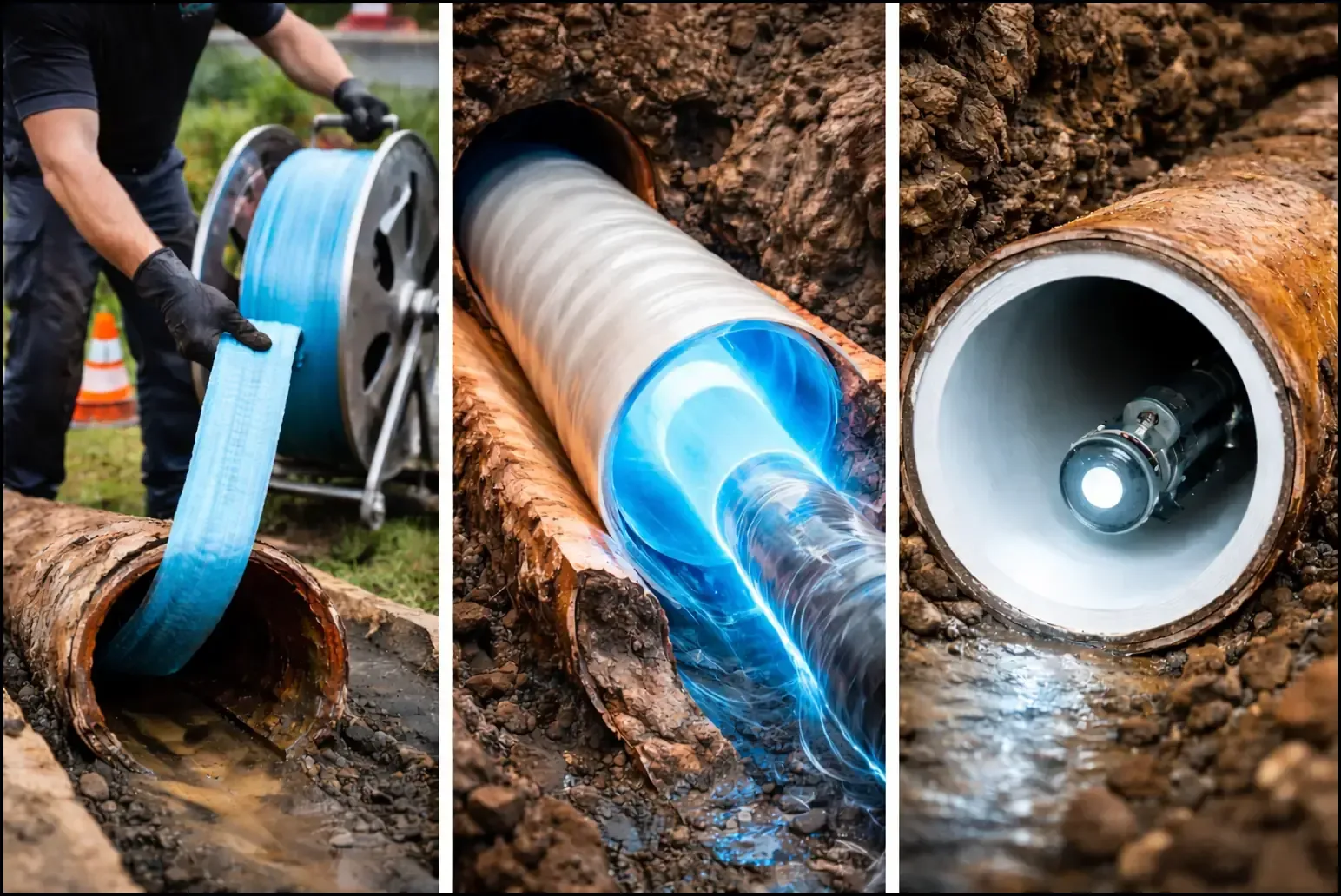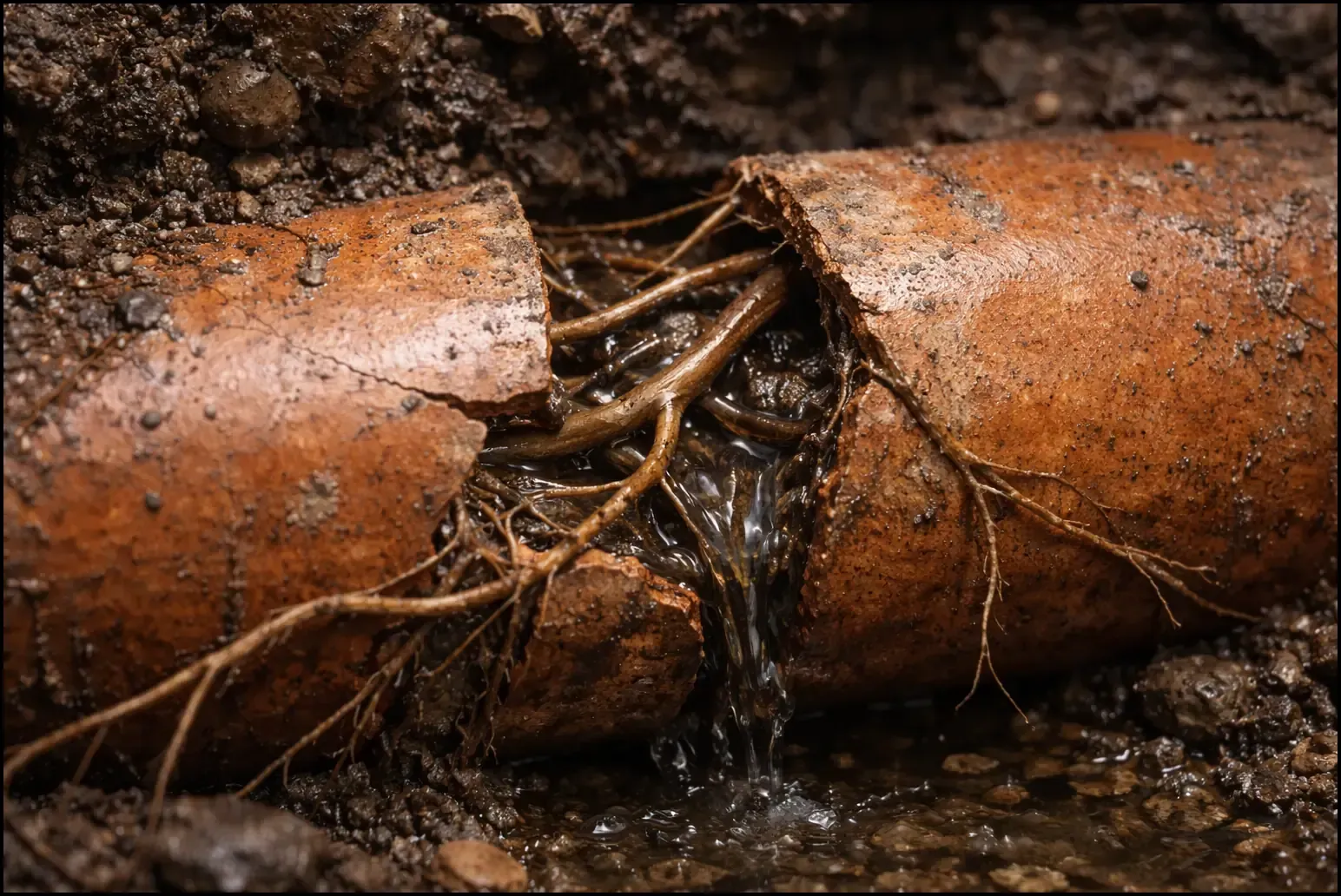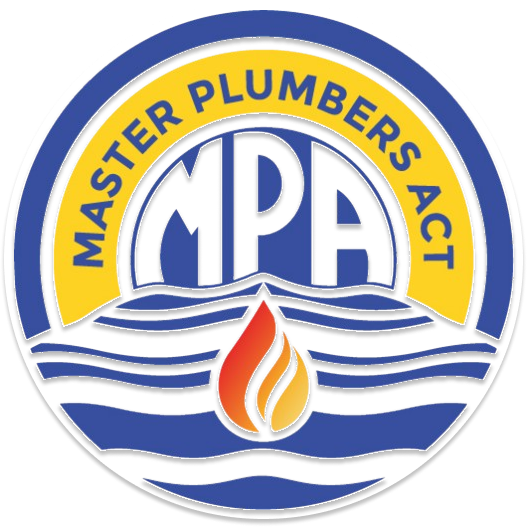Rain Tanks and Water Saving
Rain Tanks and Water Saving Ideas That Work
Table of Contents:
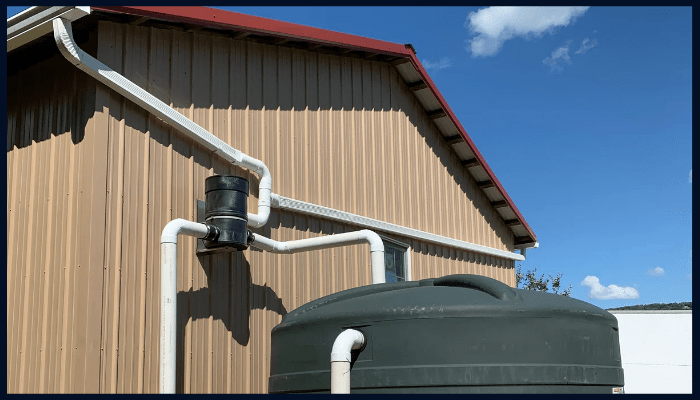
Why Rain Tanks and Water Saving Matter in Canberra
Canberra’s climate is growing drier, water prices keep edging upward, and restrictions are tightening.
Homeowners are reassessing every litre they use.
A well-sized rainwater tank paired with a smart harvesting setup helps conserve the rainwater supply.
It cuts dependence on mains supply and future-proofs the household.
J&J Plumbing Services in the ACT designs, installs, and maintains bespoke rain-tank systems.
We offer hands-on advice and upkeep to ensure the solution matches your daily needs.
Quick Takeaways
- Canberra roofs collect roughly 1 L/m² for every millimetre of rain.
- Stored rainwater can feed toilets, laundry, and gardens—trimming mains use and bills.
- ACT rebates of up to $1 000 help offset installation costs.
- Professional installation guarantees compliance, build quality, and long service life.
Installing a Rainwater Tank in Canberra
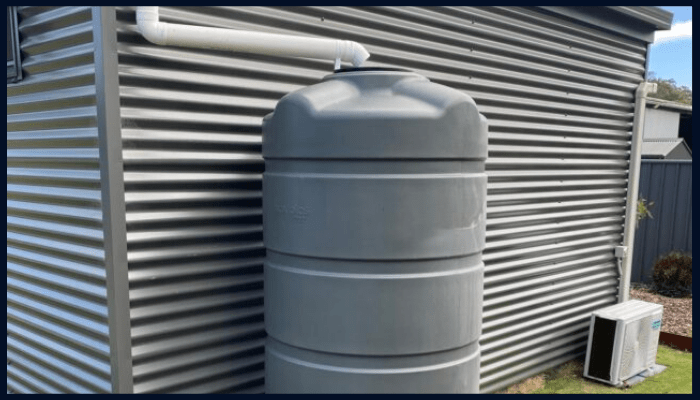
Regulatory Requirements for Rainwater Use
In the ACT you may collect rainwater for gardens without a licence, but using rainwater for any connection to toilets, laundry, or drinking outlets must be handled by licensed trades.
All plumbing and electrical work must meet the Water Resources Act and AS/NZS standards.
This ensures your tank connects to the household supply safely and legally.
Essential Components & Installation Standards
A qualified plumber installs compliant pipework and inlet strainers.
They also add backflow prevention, an overflow device, and a first-flush diverter.
This keeps the water clean.
If a pump is added for pressure or to feed appliances, a licensed electrician must wire it, and our
appliance plumbing services ensure compatibility with household systems.
Every job must follow Australian plumbing and tank standards, as outlined in the
National Construction Code rainwater harvesting standards.
This includes using mosquito-proof vents and screens.
Foundation & Development Approval
Tanks require a stable, level base.
This can be a reinforced concrete pad or compacted crusher dust.
A solid base helps support their full weight and prevents corrosion.
Units larger than 20 kL, taller than 2.4 m, or set below ground may trigger a Development Application or Building Approval, as detailed in the
ACT Government rainwater tank guidelines.
Our
renovation plumbing solutions can help integrate rainwater systems into new builds or property upgrades seamlessly.
Costs and Financial Incentives
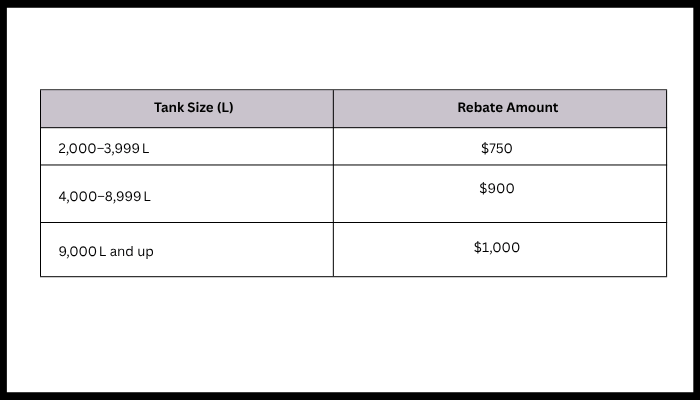
Total outlay depends on tank material (poly, steel, concrete), site preparation, plumbing runs, pumps, filters, larger tanks and labour.
The good news: Canberra households can ease that bill with ACT rebates, and similar
rainwater tank rebate programs are available in other regions.
These rebates significantly reduce the cost of rainwater tank installation while lowering your water bill
Ongoing Maintenance & Longevity
Consistent upkeep keeps your rain-harvesting system performing at its peak.
Regular maintenance, as detailed in the
rainwater tank design and installation handbook, ensures your system's longevity.
This helps keep leaves, bird droppings, and roof debris out of the stored supply.
Sediment will settle at the bottom of any tank over time, so plan on de-sludging every few years to maintain clean, odour-free water.
Inspect pumps and pressure gear regularly.
Address any signs of corrosion right away, especially on steel tanks, to stop it from spreading.
Look after the hardware and your tank can deliver dependable savings for decades.
Test seals and overflow pipes once a year. Clear
gutters and downpipes each season. Also, watch for algae or insects.
Also, watch for algae or insects. A little attention now protects both water quality and your original investment.
Why J&J Plumbing Services Is Your Go‑To Canberra Team

Expert Rainwater Tank Installation
Our ACT-licensed plumbers are accredited by Master Plumbers ACT.
They specialize in rainwater harvesting systems.
They handle everything from planning to sign-off.
We manage council approvals, size the pump, and install filters, first-flush diverters, and back-flow valves.
Then, we connect everything to your home smoothly.
Full Range of Tank Types
We supply and install poly, fibreglass, concrete, steel, bladder, slimline and underground tanks, ensuring the right tank is chosen for your roof area, outdoor space, water pressure needs and tank size requirements.
This way, you get the most capacity without crowding your garden.
Maximising Value Through Rebates
We guide you through ACT rebates worth $750-$1 000 and give clear, line-by-line pricing. The result: lower out-of-pocket costs, reliable water savings and a faster payback on your investment.
Ongoing Maintenance & Support
Our team schedules pump servicing, filter checks, desludging, tank cleaning and corrosion inspections. Regular care keeps the water clear, the pump whisper-quiet and the warranty intact.
We also provide routine
plumbing maintenance in Canberra to keep your rainwater system working efficiently.
Conclusion & Call to Action
Install the right rainwater tank. Pair it with smart habits, like watering gardens, flushing toilets, or using cold wash cycles.
This will lower your bills, reduce pressure on mains supply, and help make Canberra more sustainable.
Contact J&J Plumbing Services today for a free quote, rebate advice and complete system setup. Save water, save money and give your home a greener future.
FAQ: Rain Tanks and Water Saving
How does a rainwater tank save water?
A rainwater tank captures roof rainfall and stores it for non‑potable uses like garden irrigation, toilet flushing, and even drinking rainwater. By diverting water from stormwater drains and replacing mains water, it directly reduces household water consumption.
Do rainwater tanks save money?
They do. Every litre drawn from the tank is a litre you are not paying the utility for, so quarterly bills shrink over time. The upfront cost and routine upkeep soon pay for themselves through steady reductions in annual charges.
How does rainwater harvesting save water?
Harvesting collects rainfall (usually from rooftops) and holds it in tanks or barrels. That stored water is then reused on site for household or irrigation needs. This eases demand on public networks and trims storm-water runoff.
What are the benefits of conserving rainwater?
Collecting rain helps reduce stormwater runoff and contributes to a more sustainable future . It lowers demand on mains, saves money, and promotes sustainability. Plus, it provides households with a buffer during dry months or restrictions.
Why is it important for water conservation?
Conservation safeguards long-term supply. Harvesting rain helps communities reduce strain on city systems. It also cuts costs for new infrastructure and helps them adapt to changing climates.
What are the advantages and disadvantages of rainwater harvesting?
Advantages: cost-effective; lowers bills; eases demand on mains; reduces runoff and flood risk; keeps gardens thriving.
Disadvantages: Upfront and maintenance costs. Seasonal reliance on rainfall. Contamination risk if neglected. Limited storage during extended dry spells.

